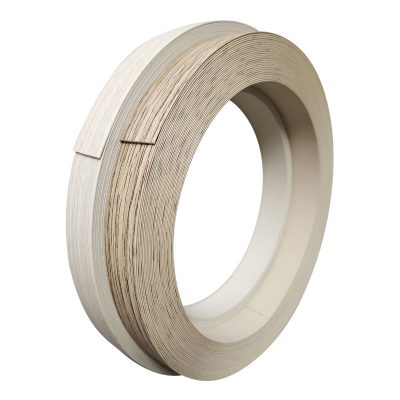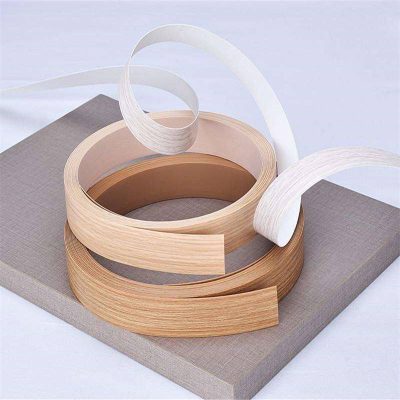ABS (Acrylonitrile Butadiene Styrene) and PVC (Polyvinyl Chloride) are two common materials used for edge banding in woodworking and furniture applications. While both materials serve the purpose of enhancing the appearance and durability of furniture edges, they have distinct characteristics that make them suitable for different situations. Here are the key differences between ABS and PVC edge banding:

What is the difference between ABS and PVC edge banding?
1. Material Composition:
– ABS: ABS edge banding is composed of a thermoplastic polymer blend that includes acrylonitrile, butadiene, and styrene. This combination results in a durable and impact-resistant material.
– PVC: PVC edge banding is made from Polyvinyl Chloride, a widely used thermoplastic polymer known for its versatility and durability.
2. Flexibility and Rigidity:
– ABS: ABS edge banding offers a good balance between flexibility and rigidity. It is relatively flexible and can conform to curved or contoured edges.
– PVC: PVC edge banding is generally more rigid than ABS, making it suitable for straight edges and surfaces that require greater stiffness.
3. Impact Resistance:
– ABS: ABS edge banding is known for its high impact resistance, making it suitable for areas that may experience accidental knocks or impacts.
– PVC: PVC edge banding also provides good impact resistance, although it may not be as resilient as ABS in some situations.
4. Temperature Resistance:
– ABS: ABS edge banding has moderate temperature resistance and can withstand higher temperatures compared to PVC.
– PVC: PVC edge banding has good resistance to temperature variations, making it suitable for both indoor and outdoor applications.
5. Bonding and Adhesion:
– ABS: ABS edge banding is compatible with a variety of adhesives, including hot melt adhesive and cyanoacrylate (CA) glue.
– PVC: PVC edge banding is commonly used with hot melt adhesive, which forms a strong bond when heated and applied.
6. Surface Finish and Appearance:
– ABS: ABS edge banding may have a slightly smoother surface finish, and its appearance can resemble that of painted surfaces.
– PVC: PVC edge banding is available in a wide range of colors, patterns, and textures, allowing for various design options.
7. Environmental Considerations:
– ABS: ABS is considered more environmentally friendly than PVC, as it does not contain chlorine and produces fewer toxic emissions during manufacturing.
– PVC: While PVC is widely used, concerns have been raised about its environmental impact and potential release of harmful chemicals during its lifecycle.

Ultimately, the choice between ABS and PVC edge banding depends on the specific project requirements, design considerations, and desired properties. Both materials offer distinct advantages and are widely used in the woodworking and furniture industries. It’s important to select the edge banding material that best aligns with the intended application, aesthetics, and functional needs of the project.
